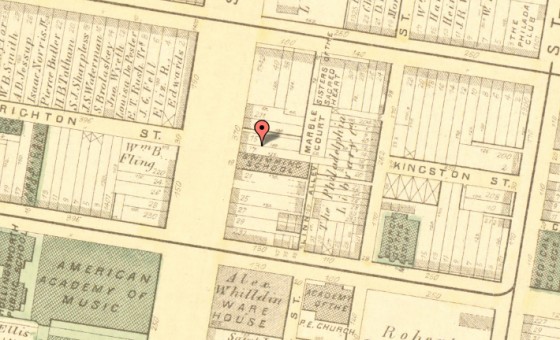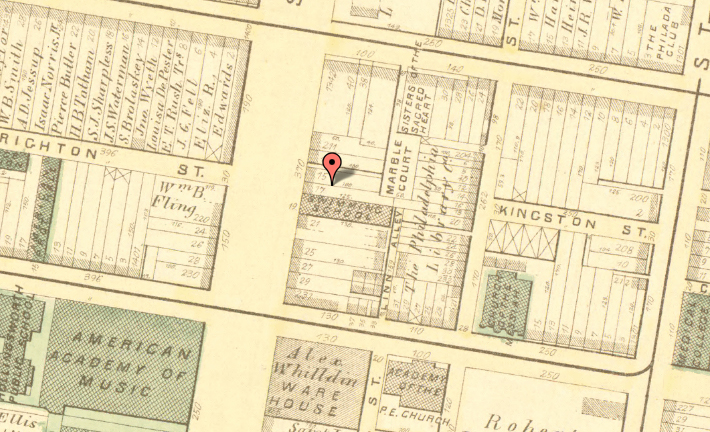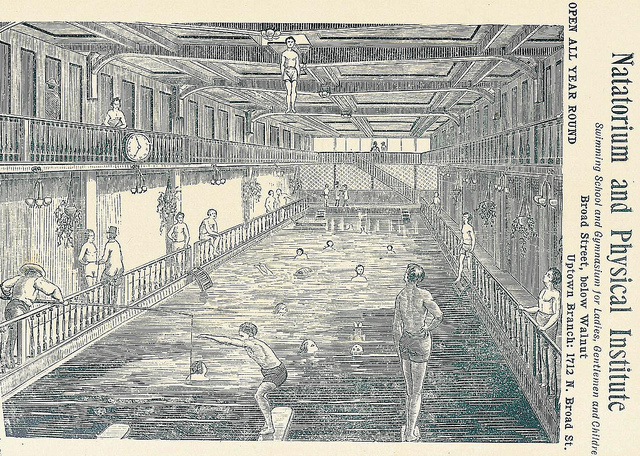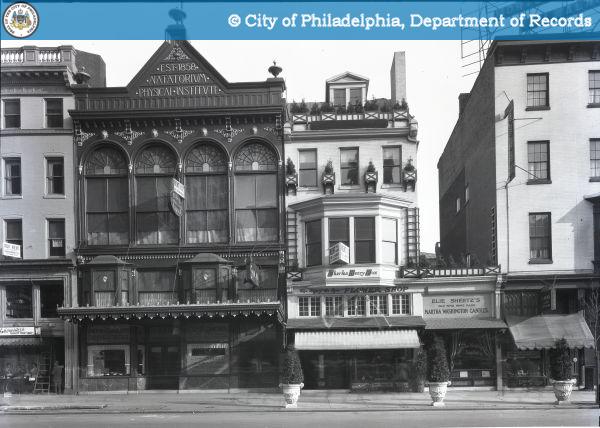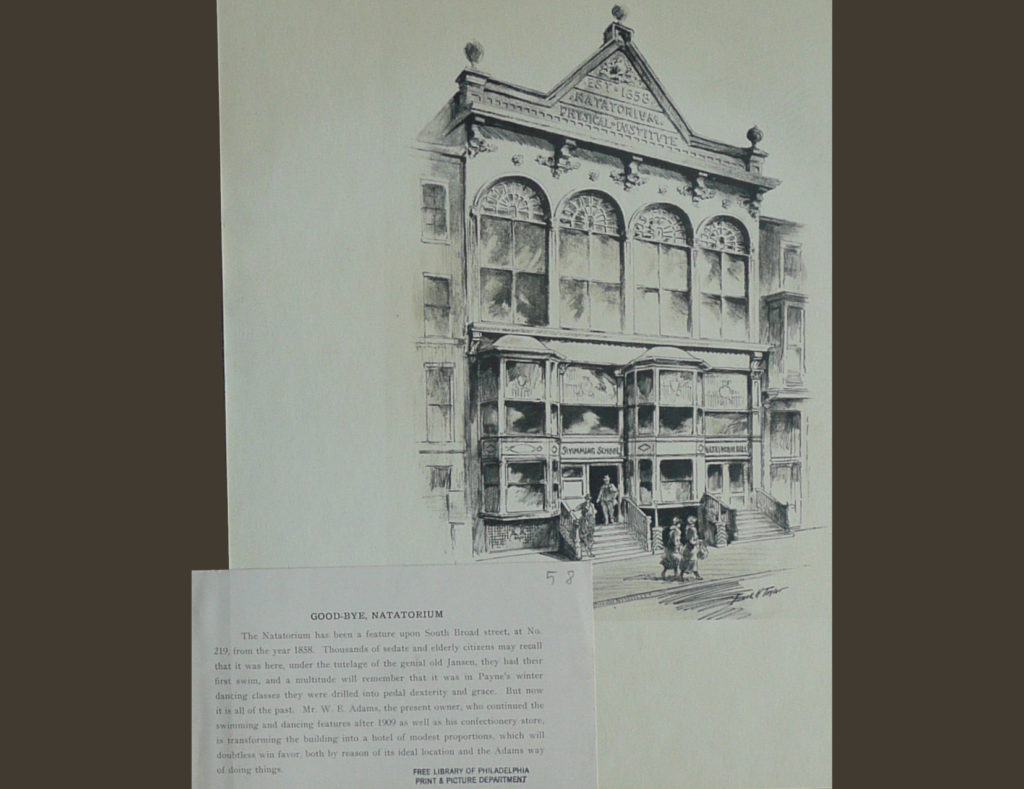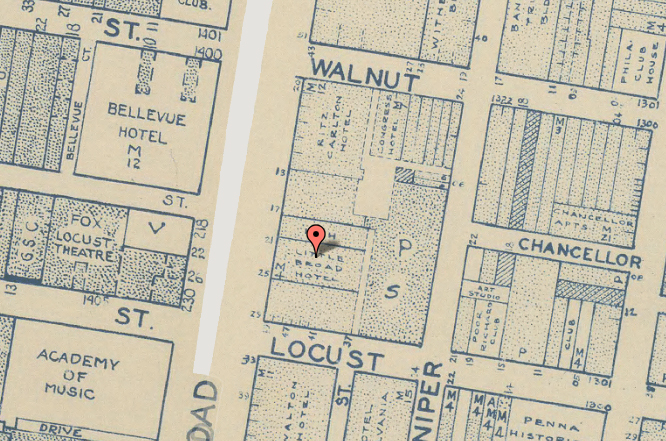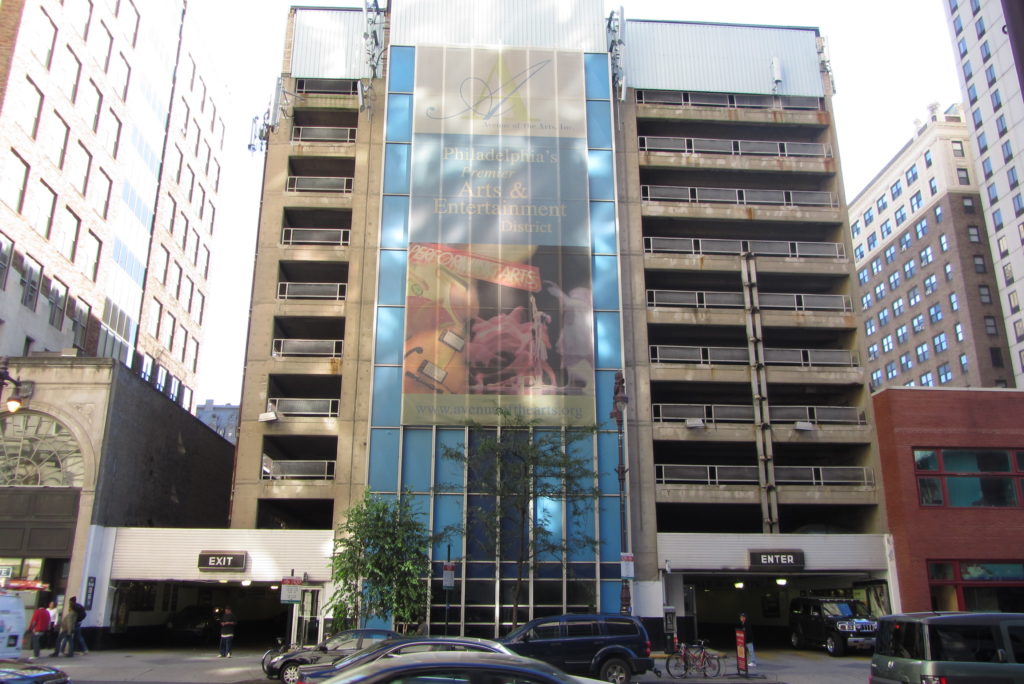According to Men’s Fitness Magazine, Philadelphia is the 14th most obese city in America. Hah! Take that Indianapolis (13th)! Granted, there are still hundreds of other metropolitan areas where people have an easier time shimmying through turnstiles than we do. But before you go blaming the cheesesteak, consult an open letter written in 1860, “To Philadelphians on Behalf of the Natatorium and Physical Institute.” The Natatorium, identified as a Swimming School in this image taken from G.M. Hopkins 1875 Philadelphia Atlas, opened in 1858 at 219 South Broad St. with the mission of improving fitness in Philly.
The open letter asks, “how common is the spectacle, in the successive stages of existence, of childhood checked in its growth, and symmetry lost in deformity, of youth falling into decay before manhood is reached, of middle age weighed down by accumulated ills and infirmities, while slowly, then more slowly move the hesitating wheels of life.” Granted, this is a pretty bleak advertisement for a new gym, but basically it warns that we’re getting old and fat, and it came roughly half a century before the advent of that tasty sandwich we’re identified with around the world. It suggests gymnastics, dancing and swimming as the cure. As shown in the 1893 illustration below, borrowed from the Free Library of Philadelphia, the facilities were intended for “ladies, gentlemen and children.”
Based on the kid levitating high above the pool, we assume that there was no active lifeguard on duty. Despite the absence of proper pool safety standards, the Institute was a preferred fitness destination for the city’s well-to-do residents. Indeed, according to the Philadelphia Dance History Journal, young ladies honed their critical promenading skills in the Natatorium-housed Solomon Archer Academy for dance instruction. The building is shown here below in a 1916 photo taken from the Philadelphia Department of Records.
A photo collection maintained by Bryn Mawr College offers an illustration, also from 1916, reporting the building’s upcoming closure.
The photo is accompanied by a caption reporting that “the present owner, who continued the swimming and dancing features after 1909 as well as his confectionary store, is transforming the building into a hotel of modest proportions, which will doubtless win favor.” The Little Broad Hotel, shown in the Works Progress Administration’s 1942 Land Use Maps, won enough favor to last for some thirty years.
Today, however, the establishment only offers overnight lodging for automobiles. Any fitness which occurs in the gigantic parking garage overlooking Avenue of the Arts is merely incidental.
–David Tomar

